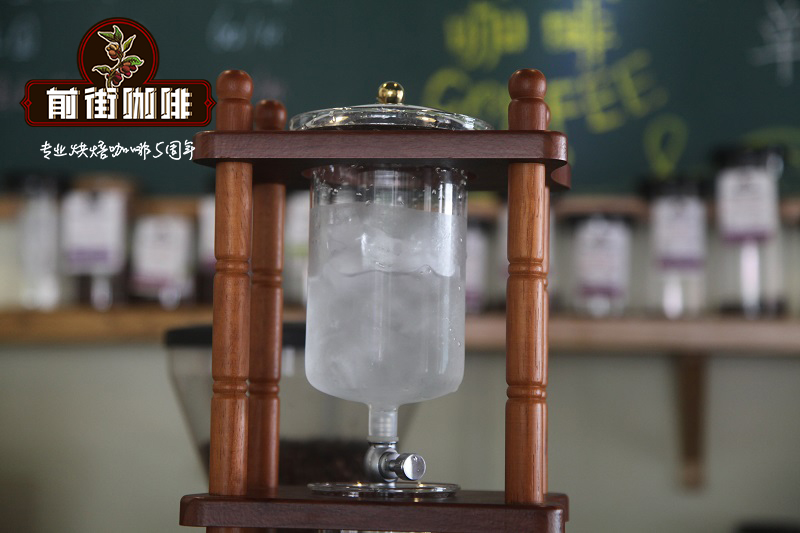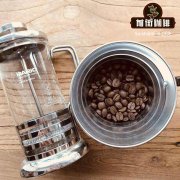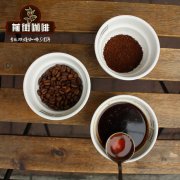Flavor characteristics of Java coffee beans in Indonesia _ how much is Java java coffee beans _ where can I buy Java coffee beans

Professional coffee knowledge exchange More coffee bean information Please pay attention to coffee workshop (Weixin Official Accounts cafe_style)
Indonesia, the "land of thousands", is the country with the most islands in the world. When it comes to Indonesia, the most familiar is probably the resort island of Bali. Today, Xiaole introduces you to Java Coffee Bar in Indonesia.
What is the flavor of Indonesian coffee? Clean + fruity + sweet + spicy! However, many people disagree with the above answer. They believe that traditional Indonesian coffee should have a strong earthy feel, a pungent taste caused by fermentation, and a moist woody fiber feel.
varieties
In Indonesia, 90 percent of coffee is Robusta, presumably as a result of the devastating 19th-century coffee leaf rust. But in Toraja, 95% of the coffee is Arabica, and the main coffee variety in Sulawesi Toraja is S795 (also known as Jember), which belongs to the Arabica ethnic group, has strong resistance to leaf rust, and has a sweet taste (maple male syrup/brown sugar flavor).
1
Sumatra: Sumatra Coffee
Sumatra is Indonesia's largest coffee producing area, well-known coffee growing areas are mainly concentrated in the northern mountains, well-known coffee are: Mandheling, Lintong, Gayo Mountain.
Mandheling coffee is named after the local ethnic group, mantailing, and the production area mostly points to the northern mountains of Toba Lake. The specific production area needs to be verified.
Lintong coffee is produced in the foothills of Lake Toba, the largest volcanic lake in North Sumatra Province and Sumatra Island. The name comes from the town named lintong southwest of Lake Toba.
Gayo mountain coffee is produced in Takengon and the surrounding mountains of Lake Tawar in Takengon, Aceh Province.
2
Java coffee beans: Java Coffee beans
Java was the first region in Indonesia to grow coffee and dominated the world coffee market as early as the 18th century. The famous Javanese mocha, a blend of Javanese coffee and Yemeni mocha, represents an era of coffee impressions. In addition, there is classic monsoon coffee Moosooned-coffee, or aged coffee.
Coffee cultivation on Java Island was initially carried out on large farms, established by Dutch colonists in the 18th century, and gradually transformed into small farmers through World War II and many changes. Good Java coffee usually comes from five existing large farms. Although Java coffee production accounts for only about 10% of Indonesia's total coffee production, it is an important component of Indonesia's fine coffee.
3
Sulawesi Coffee
Sulawesi, the most famous is Toraga, or Tonaga, Toraja.
Toraja coffee is produced in Tana Toraja district of South Sulawesi province, named after the local Toraga people. Tana Toraja is located about 300 kilometers north of Makassar, the provincial capital, and is a well-known tourist destination in Indonesia.
Initially Sulawesi coffee industry mainly supplies the Japanese market.
processing
The main processing method for Indonesian coffee is wet planing, also known as wet hulling. This coffee treatment is one of the drying methods that makes traditional Indonesian coffee different, and is also known in the local language as Giling Basah, the traditional Indonesian coffee treatment.
1
Why wet planing?
Indonesia's tradition of wet planing begins with the local weather. Indonesia's annual humidity is between 70-90%, typhoons are frequent, and in some areas, annual rainfall can reach as much as 2,000 mm.
In Indonesia's humid climate, dry coffee is a big problem. Coffee drying must take a longer time, during which time, coffee still maintains a high humidity, so that bacteria will more easily penetrate the coffee beans, wet planing method to remove parchment for the final drying step, so that sunlight will be directed to the surface of the green beans, so that the coffee beans dry quickly, 2-3 times faster than washing.
2
Treatment method of wet planing
Wet planing is a variation of the washing process that coffee farmers can do themselves.
“
1. Peel and pulp removed, parchment and mucosa retained
2. pool fermentation
3. wash away mucous membrane
4. Sun drying with parchment paper for 2-3 days to moisture content of 20-24%
5. planing parchment
6. Dry the green beans to a moisture content of 12-13%
7. ready for export
”
During this complex drying process, the beans mold slightly, giving Sumatra coffee its famous "earthy" taste. This earthy nature manifests itself in a complex, pungent sweetness, delicacy and delight, at least as it did in Sumatra micro-batch coffee a decade or so ago.
Over time, Sumatra's wet planing process was further improved, and the earthy flavor tended to edge and sweeten. Some people associate these earthy odors with fresh leaves on the ground, tobacco, cedar wood, fir trees, pepper grains. It has slight fruity flavor, soft acidity and thick taste.
3
Processed defects: kuku kambing
When parchment is removed by wet planing, the moisture content of coffee is still 20-24%, while in general, the moisture content of coffee is reduced to 10-12% before dehulling. In the "semi-dry" state, parchment will have adhesion to the surface of raw beans, parchment removal is more difficult than "fully dry", the process requires more friction.
On the other hand,"semi-dry" green coffee beans are very fragile at this time, and their hardness is far less than that of "fully dry" green beans, so the beans will be more easily crushed and form small gaps. This is what we often call horseshoe or sheep's foot bean (locally known as kuku kambing).
The ultra-fast processing speed of wet planing also results in higher defects in mantnin. In the processing plant, employees will be arranged to carry out manual selection of defects, usually DP (second hand selection) and TP (third hand selection). After three manual selection, mantnin will be better than second hand selection in defect rate.
4
Effect of wet planing on coffee flavor in Toraja region
S795 Sweet taste outstanding, black cherry, nutmeg spicy (nutmeg), high body. International Cup critic Mauricio Murillo rated Sulawesi coffee as both fruity and earthy.
Some roasters believe Toraja is popular in Japan, the United States and some European countries because it serves as a bridge between traditional coffee consumers (who prefer coffee body) and modern coffee consumers (who prefer coffee flavor, especially fruit flavor/cleanliness), taking into account both consumption habits.
Local roasters and cup judges consider Torajan fine coffee flavor profile: sweet nutty, caramel, medium smooth body, acidity reminiscent of citrus and passion fruit, spicy aroma similar to cinnamon, clove, cocoa flavor in the rhyme, overall coffee balance clean.
Local roasters and cup judges consider Torajan fine coffee flavor profile: sweet nutty, caramel, medium smooth body, acidity reminiscent of citrus and passion fruit, spicy aroma similar to cinnamon, clove, cocoa flavor in the rhyme, overall coffee balance clean.
grading
Indonesia's coffee grading system dates back to the Dutch occupation, and the latest standards are still based on defect points. 1983 Revision of coffee quality standards, implemented since October 1990, namely Standar Nasional Indonesia (SNI) biji kopi, No: 01-2907-1999.
Water washed and dry processed coffee is divided into 6 grades, G1 to G6, where G4 is divided into G4a and G4b, and G1 is the highest grade. G1, G2, G3, G4a, G4b, G5, G6. Usually export beans are above G4.
1
General standard for green coffee beans
“
1. Water content. WP water-washed beans maximum 12%, dry beans DP maximum 13%.
2. Foreign matter content. Maximum 0.5%.
3. No live worm beans, mold beans, stinky beans.
4 Number of sample defects, 300g.
”
2
graded reference
3
Sunlight Bean Defect Count Reference
Java coffee beans
Front Street Coffee Roasted Indonesian honey treated West Java coffee beans are fully guaranteed in brand and quality. More importantly, the cost performance is extremely high, a pack of 100 grams, the price is only about 250. According to the calculation of 15 powder per cup of coffee, a pack can make 6 cups of coffee, each cup only needs about 4,50 yuan, for the coffee shop sells hundreds of pieces of a cup price can be said to be extremely cost-effective.
Qianjie Coffee: Guangzhou's baking shop, small store but a variety of beans, can find a variety of famous beans, but also provide online store services. https://shop104210103.taobao.com
Important Notice :
前街咖啡 FrontStreet Coffee has moved to new addredd:
FrontStreet Coffee Address: 315,Donghua East Road,GuangZhou
Tel:020 38364473
- Prev

What is mocha Java coffee bean _ how to drink Java coffee bean price report
For more information about coffee beans, please follow the coffee workshop (Wechat official account cafe_style) Java is an Indonesian island located in southeast Malaysia and Sumatra, south of Borneo (Kalimantan (Kalimantan)) and west of Bali. Although Java is only the fourth largest island in the Republic of Indonesia, it has more than half of the country's population and is in politics.
- Next

How are coffee beans baked? How many categories are there in roasting coffee beans? Coffee beans are roasted
Professional coffee knowledge exchange more information about coffee beans Please follow how coffee beans are roasted in the coffee workshop (Wechat official account cafe_style). How many categories are there in roasting coffee beans? 1. Definition of roasting Coffee roasting (coffee roasting) means that a series of physical and chemical reactions take place inside and outside of the coffee bean by heating the raw bean.
Related
- Detailed explanation of Jadeite planting Land in Panamanian Jadeite Manor introduction to the grading system of Jadeite competitive bidding, Red bid, Green bid and Rose Summer
- Story of Coffee planting in Brenka region of Costa Rica Stonehenge Manor anaerobic heavy honey treatment of flavor mouth
- What's on the barrel of Blue Mountain Coffee beans?
- Can American coffee also pull flowers? How to use hot American style to pull out a good-looking pattern?
- Can you make a cold extract with coffee beans? What is the right proportion for cold-extracted coffee formula?
- Indonesian PWN Gold Mandrine Coffee Origin Features Flavor How to Chong? Mandolin coffee is American.
- A brief introduction to the flavor characteristics of Brazilian yellow bourbon coffee beans
- What is the effect of different water quality on the flavor of cold-extracted coffee? What kind of water is best for brewing coffee?
- Why do you think of Rose Summer whenever you mention Panamanian coffee?
- Introduction to the characteristics of authentic blue mountain coffee bean producing areas? What is the CIB Coffee Authority in Jamaica?

